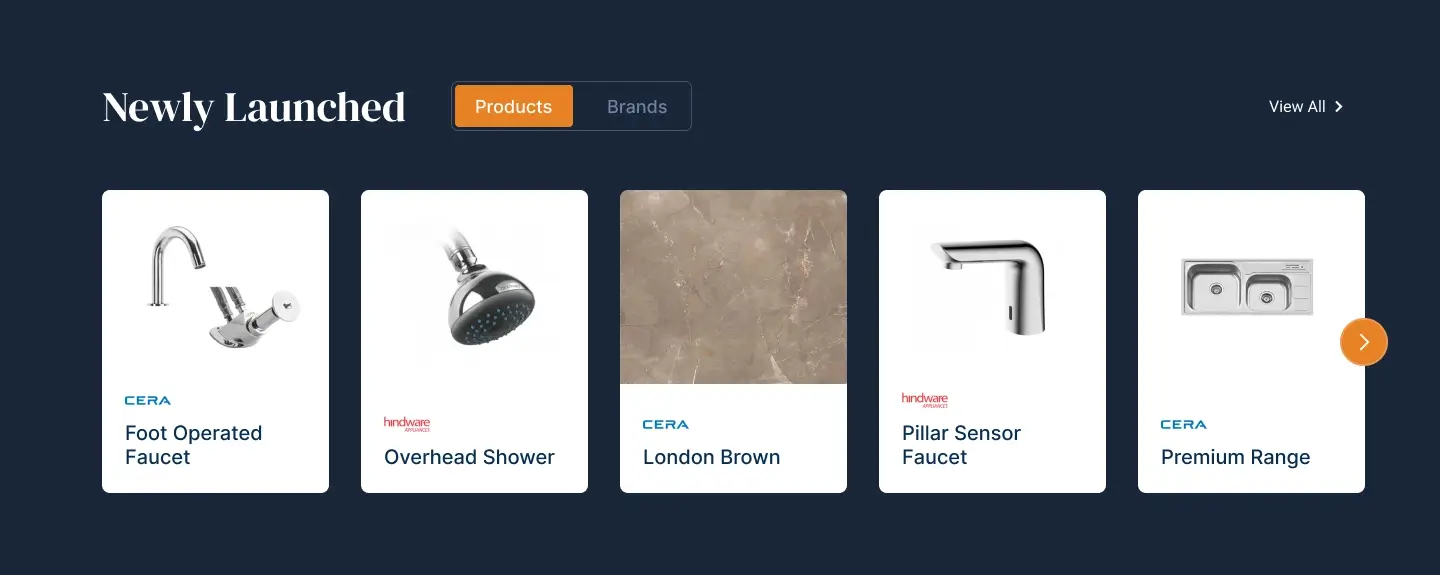
Table of Contents
Quick Summary
- A healthier home environment improves well-being through clean air and surfaces.
- Indoor air may contain higher density of pollutants than outdoor air.
- Dust in mattresses, carpets, and vents worsens allergies.
- Deep cleaning removes hidden allergens from fabrics.
- Hard surfaces are easier to keep dust-free.
- Damp microfiber cleaning is more effective than using dusters.
- Ventilation can restrict the growth of mould and bacteria in the areas with high moisture levels.
- Cross-ventilation and clean filters improve airflow and maintains a healthier home environment.
- Clean and organized spaces reduce stress and promote better sleep.
- Build habits gradually, starting with key rooms.
Creating a healthier home environment might sound complicated, but it’s actually way simpler than most people think. Your house or apartment is where you spend most of your time, especially when you’re sleeping, eating, and just hanging out. That means the air you breathe, the surfaces you touch, and the overall cleanliness of your space directly affects how you feel every single day.
Think about it this way. If you eat junk food all the time, you feel sluggish and tired. Well, if your home is full of dust, allergens, and other nasty stuff floating around, your body is dealing with that constantly. The good news is that making your home healthier doesn’t require expensive renovations or fancy gadgets. Most of the changes are pretty straightforward and can make a huge difference in how you feel.
1. Why Indoor Air Quality Matters More Than You Think

Most people worry about air pollution outside, but here’s something that might surprise you – the air inside your home is often way more polluted than the air outside. That’s because all kinds of things get trapped indoors and just keep circulating around, resulting in spoiling the Home Environment.
Dust mites love warm, humid places and they’re probably living in your mattress, pillows, and carpets right now. These tiny creatures and their waste products are one of the biggest triggers for allergies and asthma. Then you’ve got pet dander if you have furry friends, pollen that gets tracked in from outside, and even chemicals from cleaning products and furniture.
When you breathe this stuff in all day and night, your body has to work harder to stay healthy. That’s why some people feel stuffy or get headaches when they’re at home, even when they feel fine outside. Poor indoor air quality can also make you feel more tired and make it harder to concentrate on homework or other tasks.
The solution for indoor air quality improvement starts with getting rid of the sources of these pollutants. Regular vacuuming helps a lot, but you need a vacuum with a good filter that actually traps the tiny particles instead of just blowing them around. Opening windows when the weather’s nice brings in fresh air and helps push out the stale stuff that’s been sitting around.
2. Dealing with Hidden Allergens and Dust

Dust isn’t just annoying – it’s actually made up of some pretty gross things. Dead skin cells, dust mites, pet dander, fabric fibres, and even tiny bits of insects all combine to create that fuzzy layer you see on surfaces. When this gets stirred up, it floats around in the air and gets into your lungs.
The places where dust loves to hide might surprise you. Sure, everyone knows about under the bed and on top of ceiling fans. But dust also builds up deep inside your couch cushions, behind furniture, in air vents, and even inside your pillows. These hidden spots can be major sources of allergens in your home environment that keep making you feel crummy even when everything looks clean on the surface. While planning for dust and allergen control, you need to take care of these spots especially.
Fabric furniture and carpets are basically dust magnets. They trap particles deep inside where regular cleaning can’t reach them. This is where professional cleaning services can make a real difference. For example, Upholstery Сleaning in New York uses specialized equipment that can extract dirt and allergens from deep within furniture fibres, something that’s basically impossible to do with regular home cleaning methods.
Hard surfaces are much easier to keep clean because dust can’t hide as easily. Wood floors, tile, and leather furniture just need regular wiping down with a damp cloth. But for carpets, curtains, and upholstered furniture, deeper cleaning methods work way better at actually removing the stuff that makes you feel sick.
3. Smart Cleaning Strategies That Actually Work

Cleaning your home the right way makes a huge difference, but a lot of people do it in ways that actually make things worse. For example, using a feather duster or dry cloth just moves dust around instead of removing it. The particles float up into the air and then settle somewhere else a few hours later.
Damp cleaning works much better because the moisture traps dust particles so they can’t escape. Microfiber cloths are awesome for this because their tiny fibres grab onto dust and hold it instead of just pushing it around. When you’re dusting, start from the top and work your way down so you’re not dropping dust onto surfaces you already cleaned.
Timing matters too. If you vacuum or dust during the day when sunlight is streaming through windows, you can actually see all the particles floating around in the air. That’s normal, but it shows why you might want to clean when you’re not going to be hanging out in that room for a while.
Bathrooms and kitchens need special attention because moisture creates perfect conditions for mould and bacteria to grow. Good ventilation is super important in these rooms. Run exhaust fans during and after showers, and don’t let wet towels or clothes sit around.
4. Creating Better Air Flow Throughout Your Home

Air circulation is one of those things you don’t really think about until something goes wrong. Stagnant air allows pollutants to build up and makes your home feel stuffy and uncomfortable. Getting air moving helps dilute allergens and brings in fresh oxygen.
Home ventilation solutions can help a lot. Opening windows on opposite sides of your home creates cross-ventilation, which is fancy talk for getting air to flow through instead of just sitting there. Even opening windows for just 10-15 minutes a day can make a noticeable difference in how fresh your home feels.
Ceiling fans and other fans help keep air circulating even when you can’t open windows. They don’t clean the air, but they prevent it from getting stagnant. Just remember to clean fan blades regularly because they collect dust that gets blown around every time the fan runs.
Your heating and cooling system also plays a big role in air quality of your home environment. Changing air filters regularly is probably the easiest thing you can do to improve your indoor air. Dirty filters can’t trap particles effectively, and they also make your system work harder and waste energy.
5. The Connection Between Clean Spaces and Mental Health

Here’s something that might sound weird but is totally backed up by research – messy, dirty environments actually stress out your brain. When your surroundings are cluttered or dusty, your mind has to work harder to focus on what you’re trying to do. We can conclude that happy and organised mental health and clean spaces are linked with each other.
Clean, organized spaces help you feel calmer and more in control. That’s not just because they look better – it’s because your brain doesn’t have to process as much visual chaos. When everything has a place and surfaces are clean, you can actually concentrate better on homework, hobbies, or just relaxing.
Sleep quality improves dramatically in clean bedrooms with good air quality with eco-friendly cleaning tips. Dust-free pillows and mattresses mean less sneezing and congestion at night. Fresh air helps your body temperature regulate better, which leads to deeper, more restful sleep.
6. Making Healthy Changes that Stick

The key to maintaining a healthier home environment is making changes gradually so they become habits instead of chores. Start with one room or one type of cleaning task and get good at that before adding more.
Focus on the spaces where you spend the most time first. Your bedroom, main living area, and kitchen probably have the biggest impact on how you feel day to day. Getting these areas consistently clean with eco-friendly cleaning tips and expert professional help and keeping them well-ventilated will give you the most noticeable benefits.
Summing Up
Don’t try to do everything at once to upgrade your home environment. – It is a proven recipe for getting overwhelmed and giving up. Pick a few simple changes and stick with them for a few weeks until they feel automatic. Then you can add more improvements without feeling stressed about it.
Remember that a healthier home environment isn’t about perfection. It’s about creating a space that supports your wellbeing and makes you feel good when you’re there. Small, consistent efforts add up to make a huge difference in how your home feels and how healthy you stay.
Also Read: How to Transform Your House into a Healthy Living Space
FAQs on Healthier Home Environment
1. Why Is Indoor Air Quality Important for A Healthier Home?
Indoor air is found with higher density of pollutants than outdoor air, which can lead to allergies, asthma, fatigue, and poor concentration for the residents.
2. What Are Common Hidden Sources of Dust and Allergens?
Mattresses, carpets, upholstered furniture, air vents, and pillows trap dust, mites, and dander that trigger health issues.
3. How Can I Clean My Home More Effectively?
Use damp microfiber cloths, vacuum with HEPA filters, and avoid dry dusting tools that just spread particles.
4. How Does Ventilation Improve Indoor Health?
Cross-ventilation, fans, and clean HVAC filters reduce stagnant air and improve oxygen flow indoors.
5. Can A Clean Home Affect Mental Health and Sleep?
Yes, clutter-free and dust-free spaces lower stress, improve focus, and promote restful, uninterrupted sleep.






























